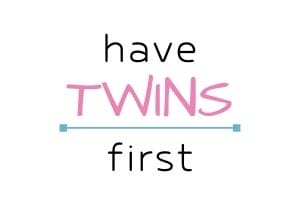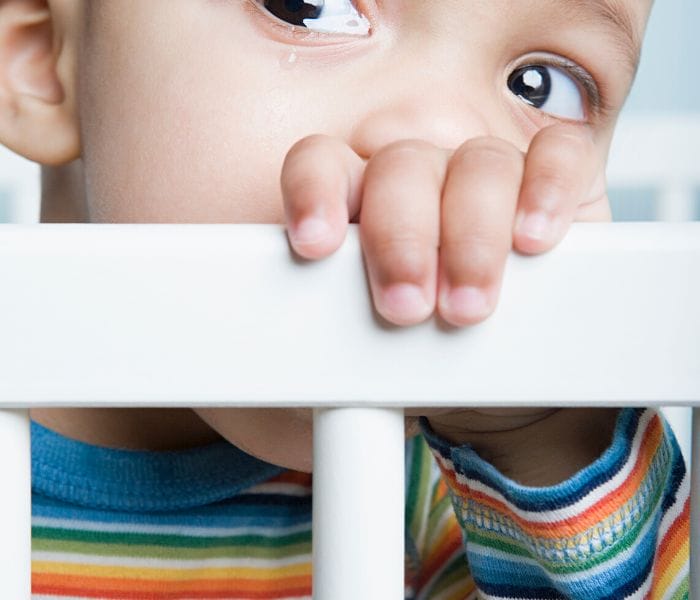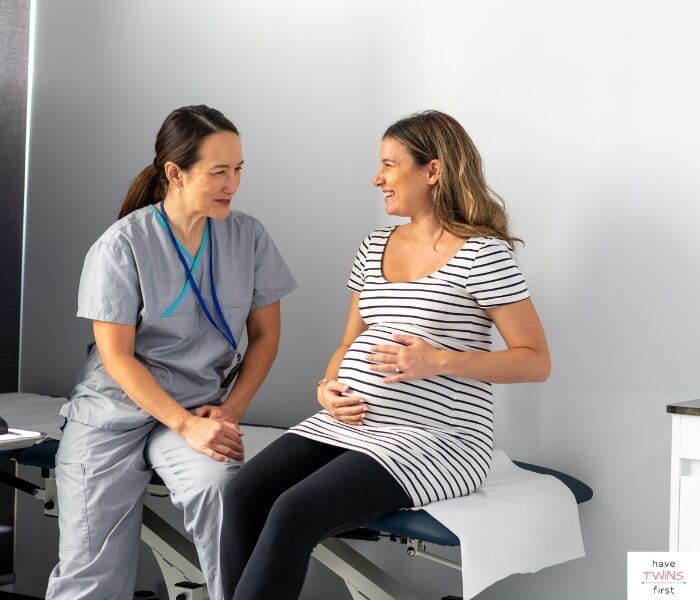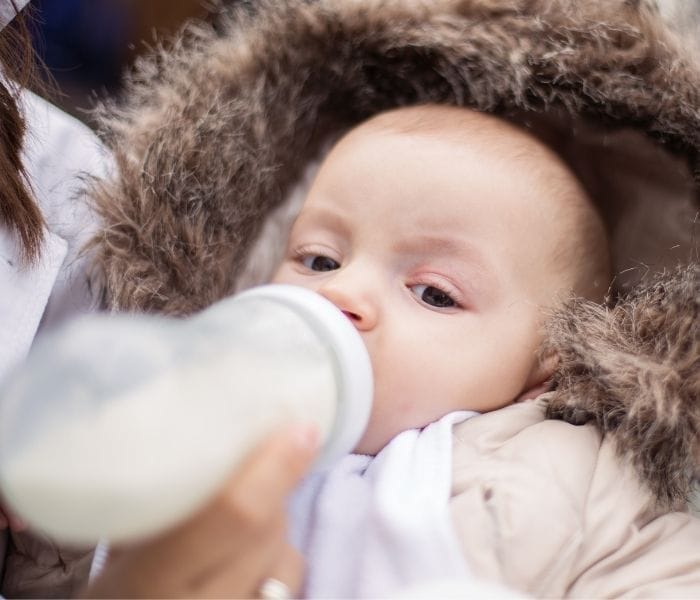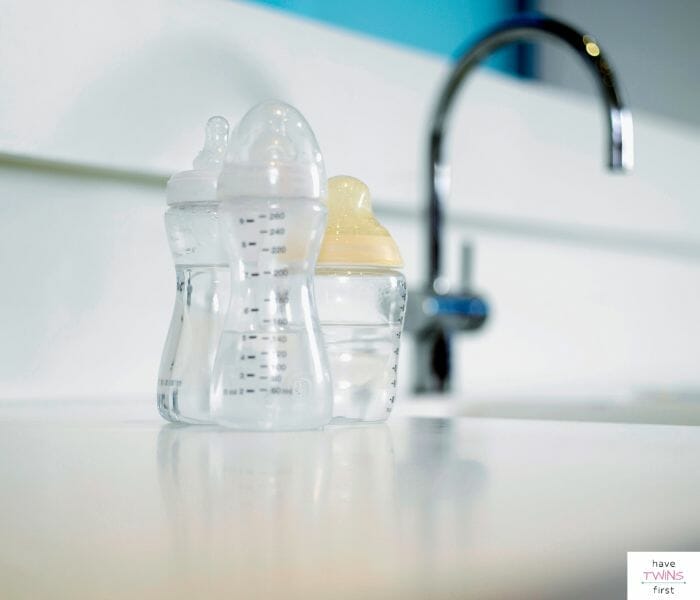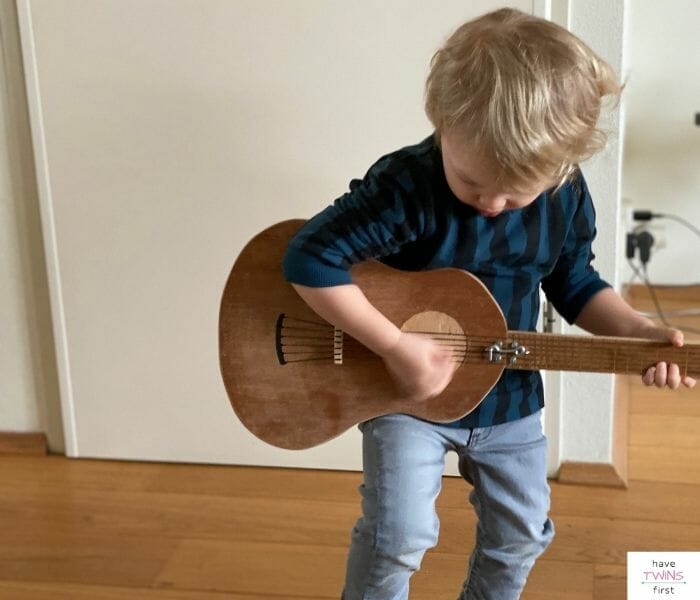Last updated: July 21, 2024
The process of bottle feeding a newborn baby is not always smooth. There is a learning curve before both baby and parent / caregiver get into a good rhythm.
As a mom of 3 and a mom of twins, I did more than my fair share of bottle feeding my babies. During the newborn stage, it wasn’t always easy. That’s why I’m sharing this guide and my top newborn bottle feeding tips with you today.
Please note there are affiliate links in this post. Read my privacy & disclosure policy at the bottom of this page to learn more.
Is Bottle Feeding Safe for a Newborn Baby?
Formula feeding is the safest and recommended alternative to breast milk. It is completely safe and made according to the needs of a baby’s healthy development.
It is also safe to feed expressed breast milk from a bottle. For both formula and breast milk it is safe as long as the milk has been stored in the correct manner, for example at the right temperature.
Related: Printable Breast Milk Storage Guidelines & Printable Formula Storage Guidelines
How To Prepare a Bottle for a Newborn Baby
Now that we have established that bottle feeding a newborn is safe as long as the milk has been stored properly, let’s review how to prepare bottles for both formula feeding and bottle feeding breast milk. See below for instructions on each.
Preparing Powder Formula Bottles
To prepare a bottle of formula for a baby, use the following steps:
- Wash your hands,
- Ensure the bottle has been thoroughly washed and sterilized.
- Take room temperature bottled water or room temperature water that has been boiled and measure it in the bottle. The instructions with the formula will tell you how much water to use.
- Measure and add formula to the bottle. Again, the instructions with the formula will tell you how much formula powder to use.
- Shake the bottle by swirling it (don’t shake hard to prevent bubbles), until the water and powder are well mixed.
Breast Milk Bottle Preparation
To prepare a bottle of breast milk, you should go through the following steps:
- Collect breast milk using a breast pump.
- If needed, store it in the refrigerator or freezer.
- If needed, thaw or warm the milk to room temperature.
- If needed, pour breast milk into a sterilized bottle.
I will also add that you can mix formula and breast milk together in a bottle. First, you would mix the amount of formula needed. Then, top off the bottle with breast milk.
Bottle Feeding Positions
To ensure that your baby has a safe and comfortable bottle feeding session, follow these guidelines for the best bottle feeding positions.
- Place your baby’s head in the crook of your arm in the cradling position, then lift your newborn’s head slightly. A baby should never be lying straight back while drinking milk because it can lead to choking.
- Have your newborn sit up slightly while drinking from a bottle. You can give your baby support with your chest.
Newborn Bottle Feeding Position Tips for Babies with Reflux
Babies who have reflux issues can be very difficult to handle. A little mistake can cause a lot of pain for them. Both breastfed and bottle fed babies might experience reflux. Follow these newborn bottle feeding position tips to help to cope with reflux issues.
- Check the flow of the nipple. Make sure it is not too fast or slow. It should be age-appropriate for a newborn.
- Feed in small, but frequent quantities.
- Take breaks in between feedings and try to burp your baby as many times as possible.
- A baby should never be lying flat while drinking milk. Hold your newborn in a slightly upright position while he or she drinks, and after drinking as well.
- Try using anti-gas drops for babies with colic issues.
- Try using a bottle made specifically for babies with reflux.
How To Bottle Feed a Baby Step-By-Step
Once your newborn’s bottle is prepared and you have the correct position, it’s time to feed your baby by following these steps.
- Comfortable position: Find a comfortable position for yourself and the baby so that both of you do not get tired.
- Fill the entire nipple: Make sure the milk fills the entire nipple. It helps to minimize the amount of air that goes into the baby’s tummy. Hold the bottle in a horizontal position so that the nipple is filled with milk.
- Burp your baby: Burping a baby during and after feeds helps prevent spitting up, crankiness, and being gassy.
- Bond with your newborn: This is the perfect opportunity to get to know your baby. Look straight into her eyes, sing some songs, or talk to her. This will make feeding sessions a happy time.
Top Newborn Bottle Feeding Tips & Info
Below you find tips and advice on dealing with common newborn bottle feeding problems. If you are struggling to bottle feed your little one efficiently, some of the items below might be helpful for you.
1 – Signs of Hunger in a Newborn Baby
For new moms, it can be a constant struggle to figure out when they should be feeding their baby. The good thing is babies do give hunger cues that can help parents know when it is time for a feeding. Some of those cues are as follows:
- Sucking on hands or fingers
- Opening and closing the mouth
- Becoming more active
- Turning head side to side searching for milk
When these signs go unnoticed, it eventually leads a baby to start crying. Watching out for hunger cues in your newborn and feeding her before she is upset is beneficial. Plus, once a baby starts crying it can be difficult to calm him or her down.
2 – Signs of Being Full
It is important to feed a baby until she is fully fed and satisfied. But, you also want to make sure she is not overfed. Look out for these cues that help you identify when a baby is full.
- Baby tries to move away from the bottle
- Baby opens fists and relaxes them
3 – What Amount Should My Newborn Baby Be Drinking & How Often?
To avoid overfeeding a baby and making her uncomfortable, it is important to know the right amount of milk that she should be drinking. Here are a typical newborn’s needs:
- Formula: A newborn baby should be drinking 1.5 to 3 ounces of formula every 2 to 3 hours.
- Breast milk: A newborn baby typically drinks 1.5 to 2 ounces of breast milk every 2 hours.
It’s also important to note that the time between bottles starts from when a feed starts. That means if it takes 30 minutes to feed a bottle, you could be feeding another bottle 1.5 hours from when the feed ended.
Related: Use this printable Bottle Feeding Log to stay organized and reduce overwhelm
4 – How Long Does It Take a Newborn Baby To Drink a Bottle?
A newborn takes some time to learn the art of feeding on a bottle. It can take up to 20 to 30 minutes for a newborn to finish a bottle.
If a newborn baby drinks milk in 5 minutes, it means the flow is too fast. Similarly, if a baby has started taking a lot longer than normal to drink his or her bottle, the nipple flow might have become too slow. In such cases, look into changing the nipple size you are using.
5 – What To Do If Your Baby Drinks Milk Too Fast & Chokes
If a baby drinks milk too fast from a bottle causing choking, one solution is to change the nipple of the bottle. Find a nipple that has slower flow. Other ways to prevent choking in babies while they drink milk, include the following:
- Take feeding breaks after a few minutes and try to burp your baby.
- Do not lay babies down flat on their backs while drinking milk.
- Try paced bottle feeding.
If a baby chokes on milk and the situation resolves on its own quickly, it is nothing to get too concerned about. However, if this is a consistent problem try the tips above.
6 – Signs Of Poor Bottle Latching
Next up on the list of newborn bottle feeding tips is reviewing poor bottle latching. It can be stressful when a baby does not latch on to the bottle properly.
There are many reasons that babies cannot latch properly. Here are some signs that a baby is struggling with drinking from a bottle.
- Chewing on the bottle’s nipple
- Turning head away from the bottle
- Unable to suck milk from the bottle
- Coughing while feeding
- Not being able to swallow milk and spitting it out
7 – What To Do If Your Baby Is Not Properly Latching Onto the Bottle
If your baby is not latching properly, you will need to try to figure out why. Below are some reasons why a baby is unable to latch onto a bottle.
- If you notice signs of reflux problems, this could be an indicator that your baby is having trouble latching onto the bottle. You can try to resolve the issue by using the reflux tips that were provided earlier.
- The structure of a baby’s face i.e. cheeks, mouth, tongue or jaw can affect their feedings. These body parts directly affect how a baby is able to latch on to a bottle.
- It is possible that the oral muscles of the baby are too weak and do not have the strength to suck onto the bottle properly. It can happen even if the oral motions look normal to you.
Any of these issues can be formerly identified by a medical doctor only. If you have tried your best to get your baby to latch on to a bottle but failed, it is a good idea to call your baby’s pediatrician. If necessary, you may even be referred to a professional who specializes in feeding issues.

You can safely bottle feed your baby, just follow these newborn bottle feeding tips to make the process as easy as possible for you.
Bottle feeding can be a stressful journey for some parents. But once you and baby get the hang of it, it becomes much easier, and you will probably start to enjoy your bottle feeding sessions.
Every baby is different and you should not rely solely on anyone else’s experiences. Try out different bottle feeding methods for yourself and see what suits you and your baby best. Good luck!
